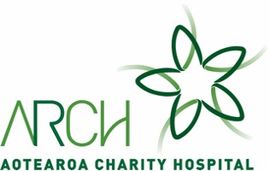Central Auckland, East Auckland, South Auckland, West Auckland, North Auckland > Private Hospitals & Specialists >
Aotearoa Charity Hospital (ARCH)
Private Service, General Surgery, Obstetrics and Gynaecology, Ophthalmology, Plastic Surgery
Minor Plastic Surgery
What is Plastic Surgery?
Plastic surgery covers a wide range of different surgical procedures that repair, reconstruct or replace structures in many different parts of the body including the skin, face and head, hands, breast and stomach. Plastic surgery does not involve the use of plastic materials.
Plastic surgery can generally be divided into two main types:
- Reconstructive surgery: is performed on parts of the body that are abnormal or have been affected by a birth defect, accident or disease. This includes cleft lip and palate repair, scar revision or reconstruction (including skin grafts) following burns. Surgery is usually performed to improve function, but may also be performed to bring the appearance of a part of the body as close as possible to normal.
- Aesthetic or cosmetic surgery: improves appearance or body image by reshaping features of the face or body e.g. breast enlargement, face lift, liposuction.
ARCH Main Plastic Surgery Services Include:
- Carpal tunnel
- Duputrens
- Lumps and bumps
- Skin lesions
Carpal Tunnel Syndrome
A pinched nerve in the wrist that causes tingling, numbness and pain in your hand may require surgery to make more room for the nerve. This operation is usually performed under local anaesthetic (the area being treated is numb but you are awake).
Dupuytren's Contracture
Dupuytren's contracture is a hand disorder in which the fingers bend toward the palm and cannot be straightened. The little and ring fingers are most commonly affected but all the fingers can be involved. Dupuytren's contracture progresses slowly and is usually painless. In patients with this condition, the tissues under the skin on the palm of the hand thicken and shorten enough that the tendons connected to the fingers cannot move freely.
Skin Lesions
Skin lesions can be divided into two groups:
- Benign (non-cancerous): e.g. moles, cysts, warts, tags. These may be removed to prevent spreading (warts), stop discomfort if the lesion is being irritated by clothing/jewellery or to improve appearance.
- Malignant (cancerous): basal cell and squamous cell carcinomas are generally slow growing and unlikely to spread to other parts of the body. Melanoma is a serious skin cancer that can spread to other parts of the body. Urgent removal is recommended.
Surgery to remove skin lesions usually involves an office or outpatient visit, local anaesthesia (the area around the scar is numbed by injecting a local anaesthetic) and stitches. You may or may not have a dressing put on the wound and it is important to keep the area dry for 24 hours. Stitches may be removed in 1-2 weeks. You may need to take a few days off work after the surgery.
Was this page helpful?
This page was last updated at 10:37AM on November 28, 2023.

